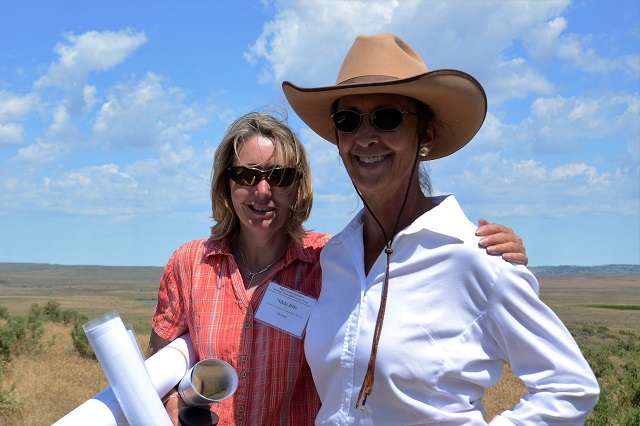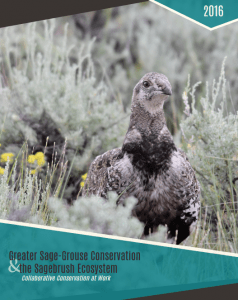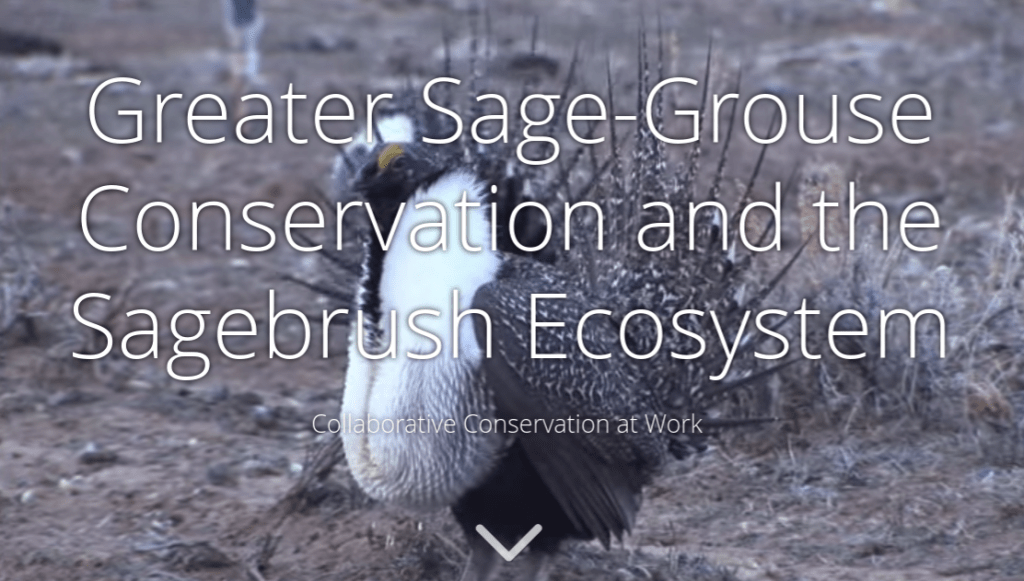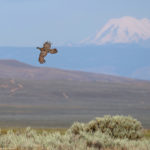Collaborative Conservation Is Paying Off For The Sagebrush Ecosystem

October 5, 2016
Photo above by Brianna Randall: Collaborative conservation means working with people to conserve the land that sustains us. Annie Shirley, rancher, and Nikki Rife, NRCS, worked together to enhance wildlife habitat and agricultural operations in eastern Montana.
New joint report highlights continued sagebrush conservation partnerships that are working for wildlife and ranchers in the West
Across eleven states and over 173 million acres in the American West, federal and state agencies, private landowners, and non-profit partners have united behind the common goal of conserving the greater sage-grouse, along with the 350 species — and millions of people — who depend on healthy, intact sagebrush range.
This impressive conservation collaboration led to the historic decision by the U.S. Fish and Wildlife Service in September 2015 to not list the bird under the Endangered Species Act. Since then, the diverse partners have continued to work together on strategic projects, practices, and policies that are making a difference for wildlife and working lands.
On the one-year anniversary of this unprecedented wildlife success story, many of the partners invested in sagebrush conservation created this joint 2016 report and an accompanying online story map. These new resources highlight recent collaborative efforts to protect habitat and the Western way of life in sagebrush country.
The NRCS-led Sage Grouse Initiative was proud to contribute to this new report, detailing a few of our stories and scientific findings from the past year. Since 2010, SGI has engaged over 1,300 ranchers to conserve over 5 million acres of sagebrush habitat. We plan to maintain the momentum, as the NRCS has committed an additional $211 million of Farm Bill funding through 2018 to implement our SGI 2.0 plan.
The new joint report was heralded by Department of Interior Secretary Sally Jewell as she stood alongside ranchers and state officials at a roundtable discussion September 21, making headlines across the nation. This Field & Stream story quotes SGI-enrolled rancher Pat O’Toole as he encourages continuing voluntary, incentive-based conservation practices:
“We need to make sure there’s a future for agriculture in the West,” O’Toole noted. [Fellow rancher T. Wright] Dickinson agreed, citing the thousands of acres of open space managed by multi-generational ranchers who are playing a key role in protecting the core values of the western landscape—and vital sage grouse habitat.
The health of rangelands within the sagebrush sea is dependent on ensuring that ranching families continue to have the opportunity to keep ranching.
—
Check out the new Greater Sage-Grouse Story Map
Read the 2016 joint report Greater Sage-Grouse Conservation and the Sagebrush Ecosystem: Collaborative Conservation At Work
Read the Field & Stream blog One Year Later, Sage Grouse Collaboration Is Paying Off
—
—
The Sage Grouse Initiative is a partnership-based, science-driven effort that uses voluntary incentives to proactively conserve America’s western rangelands, wildlife, and rural way of life. This initiative is part of Working Lands For Wildlife, which is led by USDA’s Natural Resources Conservation Service.
—







